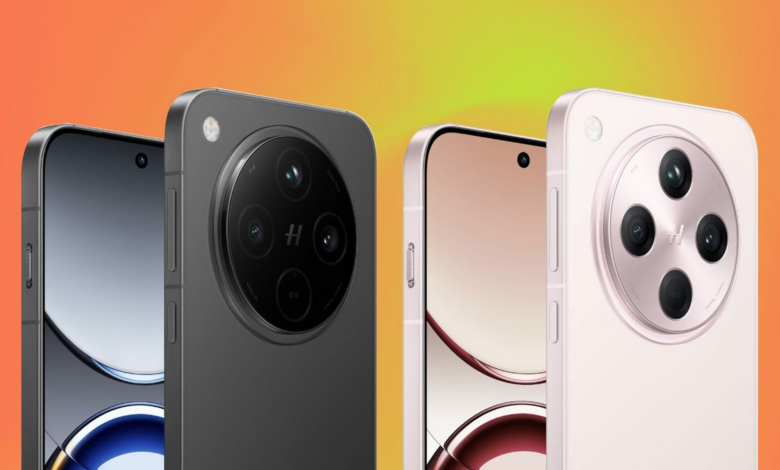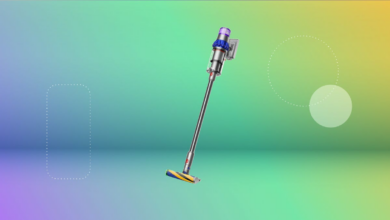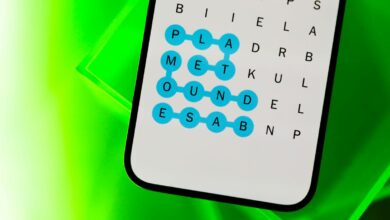Oppo’s Find X8 Pro wants to be an AI phone, but the camera is the real star

Even before I unboxed the Find X8 Pro – let alone used it – I knew Oppo wanted AI to be the main attraction of this phone. It was clear: the words Oppo AI Phone were prominently displayed on the side of the device’s box, and the company had discussed the device’s features ahead of the launch.
The Find X8 Pro is Oppo’s flagship phone, after all Samsung’s Galaxy S24 series and Apple’s iPhone 16 line – both of which have a host of useful AI features. The Galaxy S24’s AI features include live translation of phone calls and generative imaging features such as Sketch to Image. Meanwhile, iPhone 16 features include a revamped Siri and time-saving message summaries. The Chinese company’s ambitions are hardly surprising given the continued buzz and releases of new AI products in the smartphone and broader consumer technology space.
For its part, the Find X8 Pro delivers on its promise. It’s the company’s first “AI phone” that offers a slew of features related to productivity and photo editing, as well as AI recommendations designed to make the experience more intuitive.
But it’s the two 50-megapixel periscope-style telephoto cameras on the device that caught my eye during my day of testing with this phone. These cameras were among the most impressive zoom cameras I’ve ever tested thanks to their sharp images of distant objects, along with the sheer versatility and creative freedom they enabled.
Besides the cameras, the Oppo Find X8 Pro has a whole host of flagship-level features. It features an incredibly bright and crystalline display, runs on a large silicon-carbon battery, supported by ultra-fast wired and wireless charging, and boasts impressive durability credentials of IP68 and IP69. The latter means that the device can withstand water jets, even at sweltering temperatures of 80 degrees Celsius (176 degrees Fahrenheit).
However, it’s not perfect. The Find X8 Pro receives a slightly shorter duration of software updates than some other competing Android phones. It gets five years of Android OS updates and six years of security patches, which is less than the seven years offered by Samsung’s Galaxy S24 series and Google’s Pixel 9 series.
Oppo also unashamedly mimics Apple’s features. The Find X8 Pro’s so-called Quick Control buttons copy the iPhone 16’s camera control button, a hardware feature designed to give users easy access to the camera, at least for now. Oppo has a history of borrowing Apple designs, for example: the 2020 Oppo Watch.
Finally, the Find X8 Pro will not receive a US launch. However, this is the first time since 2022 that Oppo is launching its flagship Find X series internationally. At the time of writing, Oppo has not shared any pricing information.
The duo of telescope cameras of the Find X8 Pro
The main feature of the Find X8 Pro’s camera module is its duo of periscope-style telephoto cameras. There are two 50-megapixel telephoto cameras with an optical zoom of 3x and 6x.
Unlike digital zoom, which achieves a closer shot by cropping an image, optical zoom is considered a true zoom because it uses the camera’s lens to enlarge the image without losing image quality. However, Oppo does have an AI Telescope Zoom feature that enhances the images captured with digital zoom. It automatically activates at 10x, just beyond the range of optical zoom, and captures sharp images in a variety of lighting conditions, including low-light environments.
Additionally, thanks to its periscope-style cameras, the Find X8 Pro offers a versatile range of focal lengths to choose from, allowing for more creative freedom. It was just fun and I felt like I could trust the camera to deliver detailed images without putting in too much effort. Telephoto lenses are already a coveted premium feature on smartphones, and this periscope-style telephoto lens is an even bigger step forward when it comes to zoom quality.
This photo was taken with the phone’s ultra-wide camera. The following image zooms in on the surrounded buildings with a zoom factor of 50x. The camera has a maximum zoom of 120x.
Oppo’s AI Telescope Zoom is in action here. The device also sharpened the image using AI to achieve this photo.
Taken indoors in portrait mode.
Example of 6x optical zoom in dim indoor conditions during the day.
Default settings adopted. Keep scrolling to see how the camera captures the boat and surroundings at different focal lengths while zooming in.
This is the image that the camera takes, with a maximum zoom factor of 120x. It certainly looks artificially sharpened, but at the same time gives you a better idea of what the ship looks like.
Portrait mode example of my dog, Rocky
AI goodies on Find X8 Pro
I wasn’t able to use the full extent of the AI features on the Find
For example, I couldn’t use the Google Gemini app, which comes installed by default on the Find X8 Pro. Additionally, the AI Toolbox didn’t seem to activate automatically, as I didn’t receive any recommended tools based on the running app.
An example of some of the AI tools on the Find X8 Pro
Most of the AI features available on the Find X8 Pro are already present on competing phones. These include Circle to Search, a new recorder app powered by Gemini 1.5 Pro, and a text-generating tool called AI Writer. Nevertheless, I definitely appreciated that generative AI features were neatly integrated into apps like Oppo’s Notes app, which helped with text generation. The AI summary tool in the recorder app was extremely useful for me as a journalist who often uses a voice recorder for stories. These features worked well enough to be standard features in my productivity toolkit.
However, I would like to see more actionable features that an AI agent can provide. Fellow Chinese rival Honor, for example, has implemented such features with the Magic V3 in mainland China. It helps users order coffee or groceries by learning their preferences and habits over time.
Locate the X8 Pro shortcut button
The Find to take a series of photos. It doesn’t have as many supported functions as the iPhone 16’s camera button, like adjusting the aperture or even taking videos, but I doubt I’d even want that.
In my short time with the Find X8 Pro, I ended up not using the Quick Button much because it’s just not a habit. I don’t expect to use it much in the long term and would prefer to take photos in the regular way. But when I tried Quick Control, I found it intuitive in terms of figuring out how to use it, even though I haven’t developed the habit of taking photos that way. Still, I wondered if Oppo could update this feature to adopt more features that I would use.
Battery and performance
Oppo has jumped on the silicon-carbon battery bandwagon that fellow Chinese phone maker and rival Honor pioneered in smartphones, taking a page from the electric car industry. I haven’t spent enough time with the device to test battery life, but this emerging trend has potential advantages over lithium-ion batteries.
These include a lower impact on the environment and a reduced risk of overheating. Research continues into the long-term reliability of silicon-carbon batteries, and their adoption in the smartphone industry is still in the early stages. But the fact that more and more smartphone makers are switching from lithium iron is an encouraging sign.
The Find X8 Pro runs on Mediatek’s Dimensity 9400 chipset, which supports advanced AI capabilities on premium Android phones, along with promises of performance improvements.
First thoughts on Find X8 Pro
The Oppo Find While those periscope-style cameras will remain a highlight of my first impressions of this phone, I’m still thinking about the potential of Oppo’s AI features. Even though my limited access to these features means I haven’t fully explored them yet, I loved having the writing feature in the Notes app and the AI summary tool in the Recorder app. However, if Oppo really wants to take things to the next level, an AI agent would help turn this device into a true assistant.
Check this out: Oppo Find X5 Pro: 5 things I like about this flagship Android phone




